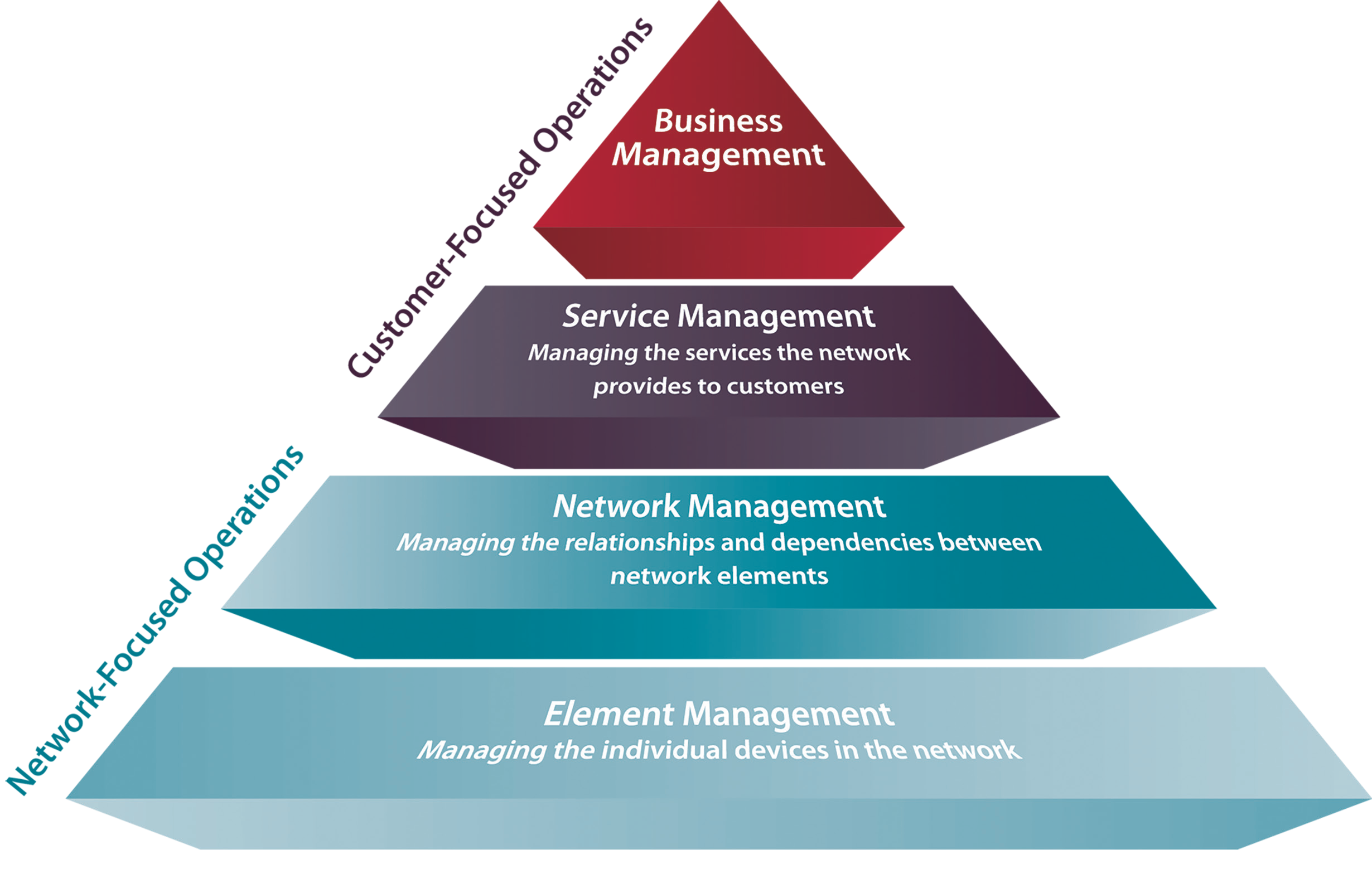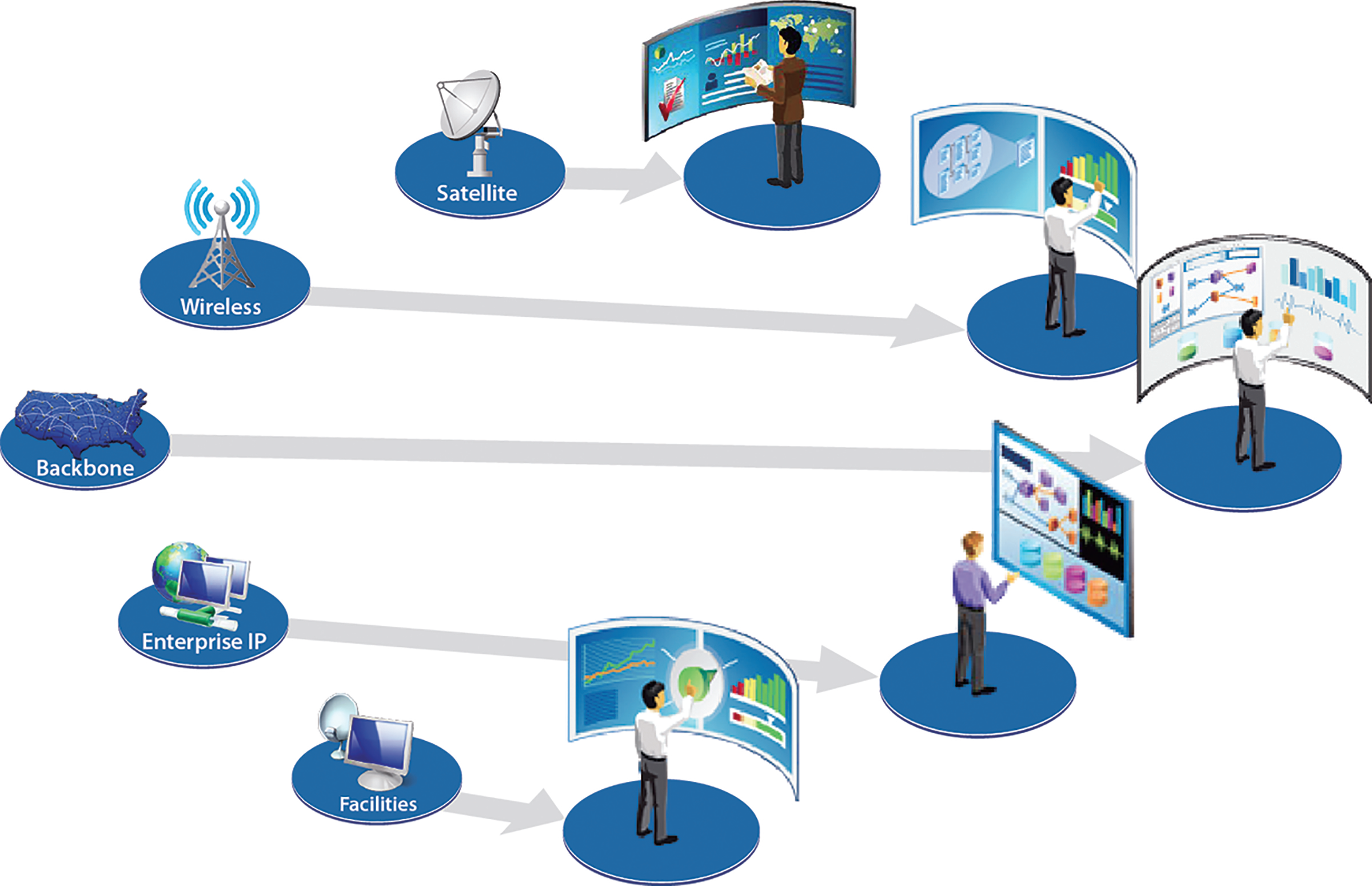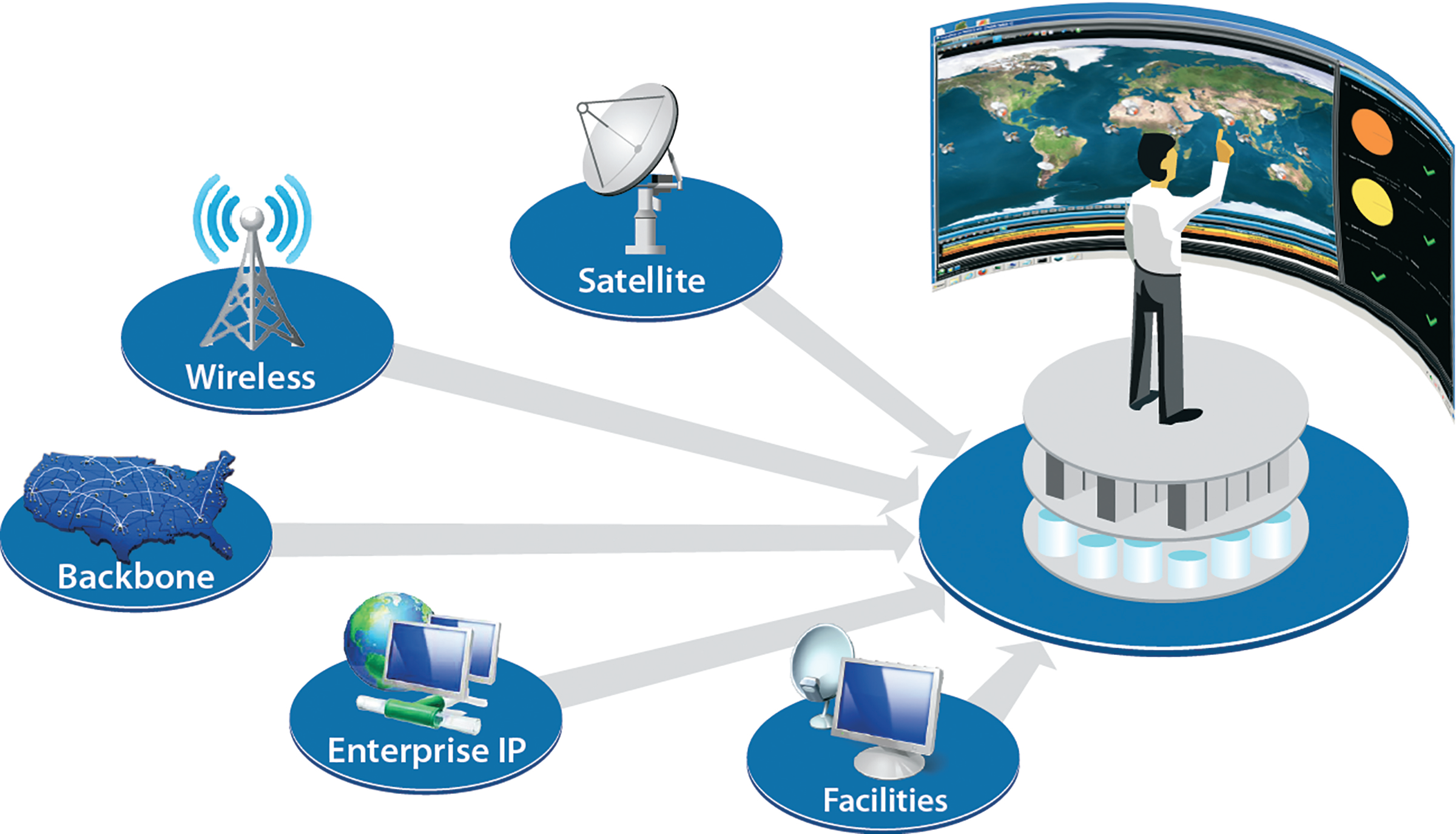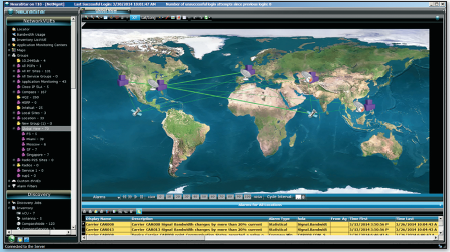
With consumer appetites for data doubling approximately every three years, the delivery of satellite services is growing rapidly, with more quantity, different types and a range of service levels being offered to meet expectations.

An SQM approach expands beyond element and network management to track service performance and customer SLAs.
As service demands intensify, competitive pressures increase and Service Level Agreements (SLAs) become more aggressive, satellite service providers are looking for more advanced techniques to better manage network complexity, offer higher levels of service and improve the customer experience.
Just as the telecom and IT worlds have adopted Service Quality Management (SQM) techniques to manage the growth in services, satellite service providers are starting to employ these latest advances to transform their operations to keep pace with demand, better manage customer services and drive greater profitability.
SQM applications enable operators to monitor and manage the levels of service they are delivering to customers. SQM applications interface with existing tools at the element management and network management layers to provide an end-to-end view of all components on the network used to carry a particular service. Without having to replace existing systems, SQM solutions track real-time performance using Key Performance Indicators (KPIs) to ensure delivery of high-value services and prioritize the recovery of any services experiencing issues, so that customer SLAs are met.
The approach enables network operators to answer questions about service performance, such as how much capacity exists, how many customers are affected by a degradation, what SLAs are in compliance or in jeopardy of being violated and what is the potential revenue impact? Operators track revenue sources more efficiently allowing them to manage more services, maximize the returns from existing SLAs, while limiting losses due to unavoidable service outages.
Satellite providers with their range of hybrid equipment and convergence to IP technology can benefit from SQM techniques that are now an applied science in the telecom world.
As an example, when a router fails in a telecom network delivering business voice, data, and video services under a stringent SLA, the Network Operations Center (NOC) with an SQM application can rapidly identify the equipment issue and immediately see its impact on customers and revenue.
Operators determine how much time there is before an SLA is violated and view the relative value of the different services affected to enable the most cost-effective resolution. This helps operations minimize SLA violations and cost impacts of extended service outages by protecting the highest value customers.
Keeping Pace With The Growth In Demand For Services
With more services come bigger deployments, increased geographic reach and more advanced configurations that challenge the effective management of the network.
The traditional approach of adding staff and tools incrementally to manage network operations is struggling to keep pace with the rapid growth. Network teams have ended up with multiple, unconnected tool sets that do not communicate with each other and only provide insight into a limited part of the network. For example, separate tools have commonly been implemented to monitor RF equipment, individual VSAT networks, IP networks, teleport and facility infrastructures including HVAC and security systems creating gaps in visibility.
The rapid expansion of these disconnected systems is not only costly, but it is one of the biggest factors that impair a network operator’s ability to optimize operations. This approach also makes it extremely time-consuming and labor intensive to track network data.
Today’s siloed management tools challenge operators to gain a complete view of their environment.

Today’s siloed management tools challenge operators to gain a complete view of their environment.
Network Operations Center (NOC) engineers often have to compile reports manually from these separate management systems to get a complete view of their operations and service performance. It becomes difficult to determine how a device failure affects a service, track the performance of top revenue producing services and guarantee SLAs for customers.
In this new services driven environment, the scale points change the network operational needs dramatically, and an expanded management approach is necessary to accommodate growth. When the network is only delivering a few services, a small network engineering staff can track the associated devices in the service chain individually and understand their interdependencies during troubleshooting. But, as the network scales to deliver hundreds or even thousands of diverse services from across the globe, operators need more advanced techniques to manage the environment.
Transforming Network Operations With SQM
By borrowing from the telecom and IT world, which has a head-start in managing a large quantity and range of services, satellite operators can employ the latest advances in SQM to scale, automate and optimize operations.
An SQM approach enables service providers to transform their operations by delivering improved visibility, end-to-end management of hybrid networks, enhanced troubleshooting capabilities, proactive monitoring, trend analysis, and the ability to scale seamlessly.
Improved Visibility
With dynamic service views and mapping, operators can see and understand the business implications of their technical infrastructure. They use real-time intelligence and analytics to quickly assess which customers are affected by a degradation or outage of even a single device anywhere in the network.

An SQM approach bridges the management silos to improve service performance and SLA management.
The specific devices such as modems, Antenna Control Units (ACUs), High Power Amplifiers (HPAs), routers and other equipment are mapped across the network to particular services and specific customers they support. This enables operators to track service performance and prioritize the highest value services with a status of “At Risk” or “Poor Quality” that need immediate corrective action to avoid any customer impact.
End-to-End Management
By bridging the management silos, SQM solutions retrieve both device and service data from monitored systems at each teleport, across the network and integrate it all into one common platform. This enables operators to gain end-to-end visibility of services from the source to destination across circuit (satellite/microwave) and packet (IP) networks.
All relevant metrics across the transport systems are consolidated into a single overall services view, so operators can act in real time to recognize and react to bottlenecks regardless of location. Comprehensive views of customers, services and circuits are provided that include IT and RF satellite layers for all types of networks including VSAT, FDMA, TDMA, DVB/RCS, SCPC, DVB broadcast, backhaul services and much more.
Enhanced Troubleshooting
The root cause identification of problems is accelerated by using a unified SQM management platform. Centralized alarm management and event correlation capabilities help identify, prioritize and recover services affected by equipment failures. Operators can drill into services and devices for more detailed troubleshooting information.
For example, once a faulty modem is identified in a service chain that includes an antenna, HPA, converter, modem and VSAT hub, the SQM application accelerates the remediation process and minimizes customer impact by displaying the device’s room, the room’s location and the customer(s) impacted. It also provides visibility into all services or customers associated with any piece of equipment, so operations can easily identify critical components and potential impacts should it become inoperable.
Proactive Monitoring
With predictive analytics operators receive proactive warnings of deteriorating operational conditions and advanced event and alarm reporting capabilities.
As an example, as the performance of a HPA decays or a drop in a carrier power level occurs, the SQM system delivers an alarm that indicates that a service may soon be affected and requires corrective action. Using an SQM approach operators track KPIs in dashboards and trends to identify performance issues far in advance of service quality being compromised.
Trend Analysis
On-demand reports with KPIs for availability, status and quality of a customer’s service are delivered to operators to help optimize operations and eliminate labor-intensive manual reporting from individual management tools. The system provides real-time metrics, trend charts and reports showing historical data including EBNO, RX Levels, BER and other KPIs to analyze service performance. In addition, reports on outages, Mean Time Between Failure (MTBF), Mean Time to Repair (MTTR) and SLAs are available to operators.
Scalability
As the business grows to hundreds of services and thousands of supporting devices across the globe, the SQM approach seamlessly scales to meet the need. It helps operators find suitable and available equipment for new services, move devices to other service chains for redundancy, and decrease maintenance time by identifying services, the associated devices and the business impact of downtime.
Taking A Business Focused Approach
Satellite service providers faced with the rapid growth in demand for services are turning to SQM approaches to transform their operations. Without replacing management tools already in place, service providers can adopt SQM capabilities and maximize the return from their existing investments. Operators are able to take a business focused approach managing services and SLAs and concentrate less on the management of the underlying network and devices. In sum, service providers are able to manage more services, maximize the revenue from existing SLAs, improve customer satisfaction and support the growth of the business.
Manage Customer Services and SLAs More Effectively
NeuralStar® Service Quality Manager (SQM) is an enterprise software product that helps organizations improve quality of service and customer satisfaction, maintain and grow revenue and optimize satellite and terrestrial operations.

NeuralStar SQM manages service performance and customer SLAs across global satellite and terrestrial operations.
Improve Quality of Service and Customer Satisfaction—NeuralStar SQM monitors and improves the quality of services and more effectively manages SLAs, resulting in enhanced customer care and increased customer satisfaction. It minimizes service disruptions to customers by discovering issues faster and helping operational staff resolve them rapidly.
Maintain and Grow Revenue—NeuralStar SQM identifies high-priority problems quickly and helps operational staff respond based on business impact such as revenue, profitability, service and customer experience. It enables organizations to manage more services, launch new services and maximize SLAs to maintain and increase revenue.
Optimize Operations—NeuralStar SQM monitors service performance across satellite and terrestrial operations in a single unified platform delivering end-to-end management visibility. It proactively monitors the network to identify issues before they become service impacting and scales to manage hundreds of services and thousands of supporting devices.
Learn more by visiting http://www.KratosNetworks.com.




